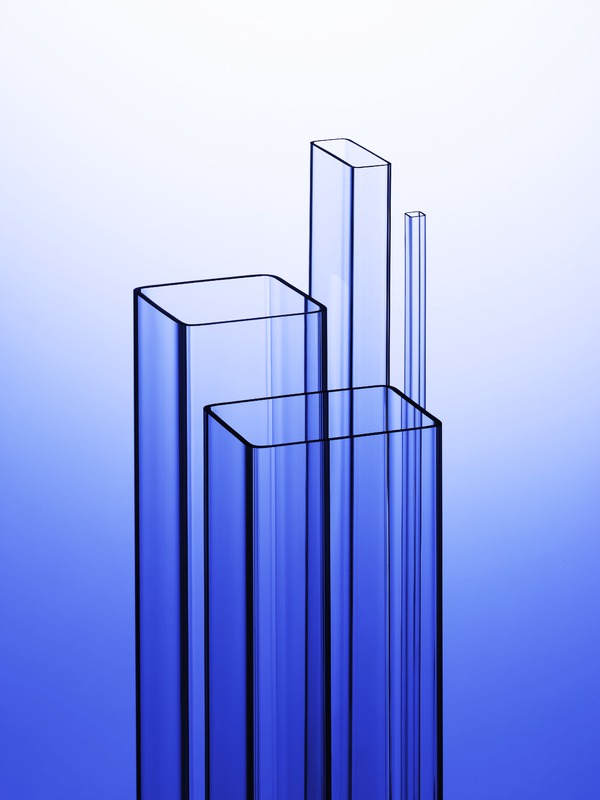Sometimes simple questions can lead to innovations. “For example: does tubing always have to be round? The form and the application need to be closely linked to produce a good product design. But the opposite may also be true. New shapes make new applications possible,” explains Hermann Tietze, Sales Director for Technical Tubing at SCHOTT-Rohrglas GmbH. “Our customers are impressed by our glass rods in different profiles. But a number of new challenges have arisen with this tubing,” Tietze adds.
There are other ways of manufacturing non-round profiles. To manufacture these, the round glass tubing has to be melted onto an angular mandrel or be blown into the respective shape. However, there are a number of disadvantages to these complex techniques: due to the fact that the process takes place in several steps, higher costs are involved and there is limited flexibility with respect to the dimensions. For this reason, SCHOTT started research and developed a new technique for manufacturing angular tubing profiles directly from the glass melt, a technique which has been patented in the meantime.
“Thanks to the direct drawing method, large volumes can now be produced at attractive prices,” Hermann Tietze explains. “Here, even customized designs that feature special angular dimensions and asymmetrical shapes are possible. The tubes can be used in a number of different ways, for instance product design, for lighting, architecture, plant construction, in addition to other technical applications.”
Depending on the dimensions of the profile, the non-round glass tubes are redrawn at SCHOTT using either the Vello or the down draw method. The respective products are available in lengths of up to 3950 mm. The tube profile can be manufactured with an edge length of between 45 x 30 mm and 150 x 150 mm. Wall thicknesses range from 1.2 to 5.0 mm.
The high geometrical accuracy of the glass tubes also makes it easier to perform precise processing. The material used is “Duran” borosilicate glass 3.3 which is well-known for its high transparency and excellent physical and chemical resistance. The hard, smooth surface is highly resistant to scratches and therefore to helps ensure high transparency and lasting “cosmetic” quality.
Borosilicate glass was developed by Otto Schott around 1890 and is one of the world’s most robust, versatile and successful types of glass products. It has a low coefficient of expansion and is resistant to temperature fluctuations, as well as many aggressive chemicals, such as those contained in conventional cleaning agents. In this respect, this glass proves itself not only for use in lighting fixtures, household products and laboratory equipment, but also in electronic components.
For further information, please consult: www.schott.com/tubing


